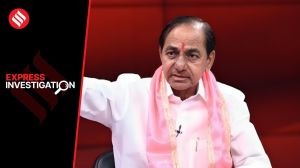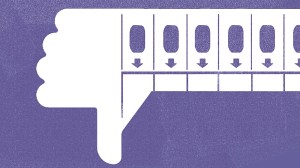Quest: ‘School education has become more holistic’
"The main motive of this institution is to achieve 3Rs — Right thinking, Right action and Right attitude."
 Saroj Bansal feels the education system has become dynamic. (IE)
Saroj Bansal feels the education system has become dynamic. (IE)
Tell us about your present as well as past assignments and your experience with education system. Also, share your experience as a teacher as well as a school administrator?
Working in areas such as admissions, quality assurance, data management and examinations has remained my past assignments in which I have touched all the required standards. Presently, I have been making effort to serve the society as a school administrator and career counseling expert. I believe in imparting smart education beyond the limit of classroom activities. As far as my experience as an administrator is concerned, I have experienced the range of co-teaching situations, which have enabled me to explore a lot.
Tell us about your school, its history and the motive behind its establishment?
Abhinav Public School, established in 2003, is recognised by the Directorate of Education, government of NCT, and is affiliated to the CBSE.
It has classes up to standard XII and is promoted by the Akhil Bharatiya Samajhothan Samiti, which has done pioneering work in the field of education.
The main motive of this institution is to achieve 3Rs — Right thinking, Right action and Right attitude. It aims at quality education and pursuit of excellence in all and in life itself.
The goal of our school is to prepare our students for leadership roles to face the competitive world.
How do you assess the transformation of the education system during the past few years?
Our education system has become dynamic and global during the past few years due to technological changes. India has made progress in terms of increasing the primary education attendance rate and expanding literacy to approximately three quarters of the population. The earlier overemphasis on cognitive domain has been replaced by a more holistic learning plan, providing for development of affective and psychomotor domains of the learner’s personalities such as human values, attitudes, life skills, as well as physical and mental health of the students.
How do you assess the new comprehensive analysis scheme of education?
The aim of the new comprehensive analysis scheme of education is to reduce the workload of students and to improve the overall skills and abilities of the students by means of evaluation of other activities. Grades are awarded to students based on work experience skills, dexterity, innovation, steadiness, teamwork, public speaking, behaviour, etc. to evaluate and present an overall measure of a student’s ability. This helps the students, who are not good in academics, to show their talent in other fields such as arts, humanities, sports, music and athletics, etc.
What are the special facilities offered to students at your school?
Several special facilities and ample opportunities are being provided to the students to enable them to do justice with their latent talents. A faculty of experts, smart classrooms, a fully equipped lawn tennis court and swimming pool, basketball ground, fully equipped science labs, canteen that serves nutrition-rich food, computer labs etc are provided.
What are the challenges students generally face these days?
Students are facing a lot of challenges due to the dynamic nature of the field of education. They are burdened with the expectations of their parents. They have to synchronise their tone of knowledge with the demands of an ever-changing global field of education. They have to prove their talent in extracurricular activities such as football, basketball, baseball, speeches or debates. Most of the time, they have to practise for these programmes every day. Then, they have games or concerts or performances that they have to do well in. This puts more pressure on them in addition to other issues that they have to deal with.
How do you promote or balance extracurricular activities along with academics at your school?
To promote extracurricular activities, emphasis is laid on intra-mural or inter-house competitions. To improve students’ involvement in extracurricular activities, peer interaction among the students is being increased, activities that enrich the experience of students in both the academic and social spheres are being promoted and classroom presentations about the different types of clubs and activities have been made available in the school campus.
What is the learning mode in your school?
The learning mode in our school is digital classroom and library. We accommodate modern sophistications in the field of education to fit into the framework of 21st century global education.
What do you think is your school’s contribution to education in Delhi?
We have nurtured the talent in our students in the form of their overall development and we have provided them a competitive environment, which has enabled them to become doctors, engineers, CAs, MBAs and leaders in their chosen fields.
Can you tell us about the initiatives taken by your school for students from economically weaker sections?
The school has remained ever ready to lend a helping hand to meet the requirements of such students. Special concessions and financial aid for stationary and uniform, and fee concession are provided to poor students.
What is your view on the Right to Education and how has it changed education in city schools?
The Right to Education includes a responsibility to provide basic education to individuals who have not completed primary education.
Besides access to various provisions of education, the Right to Education encompasses the obligation to rule out discrimination at all levels of the education system, to set minimum standards and to improve the quality of education. This right has provided an opportunity to all to do justice with their hidden talent. As a result, Delhi seems to be moving towards the goal of 100 per literacy rate.
How important is the role of teachers as mentors or facilitators in the modern learning scheme?
Teachers play a vital role as mentors to impart important social, spiritual and personal values. They can build and retain a healthy workforce in the form of students, who can react quickly to change and develop, adapt and regenerate themselves over time.












